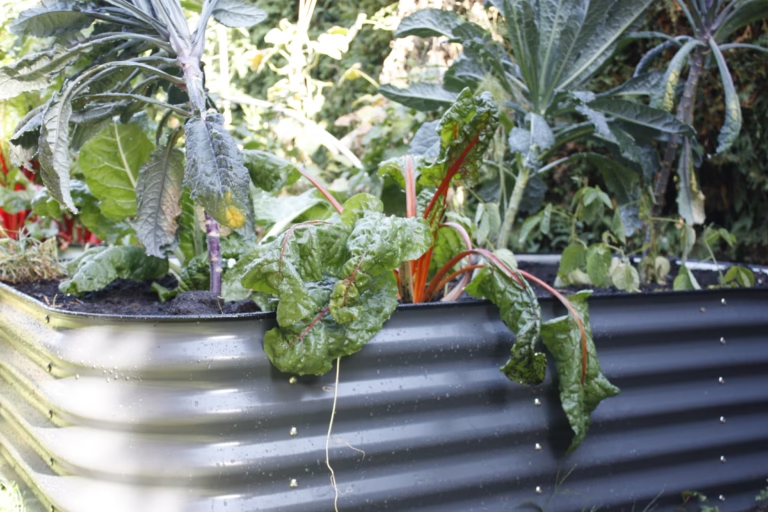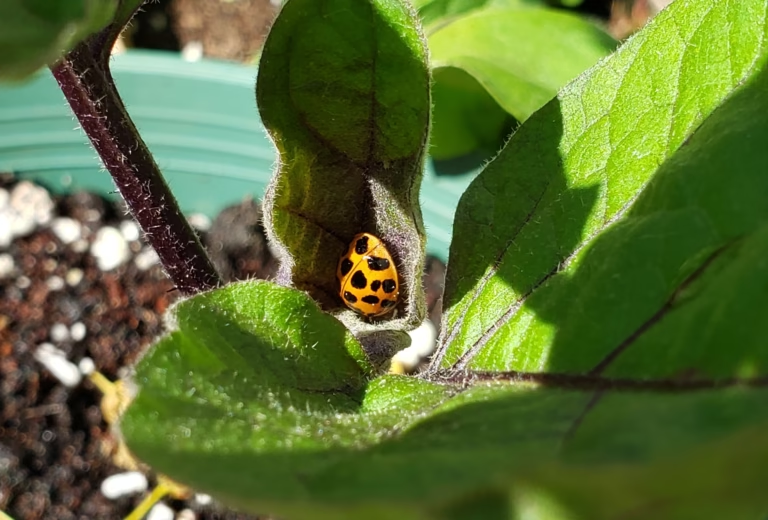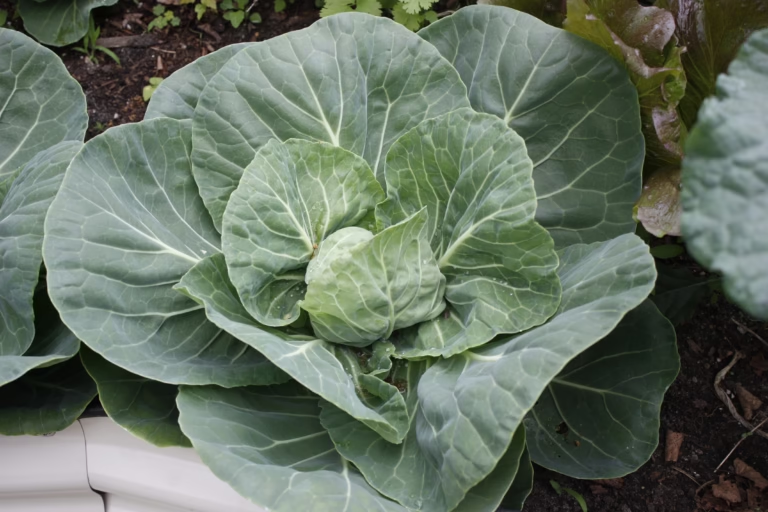
How to Grow Comfrey As A Natural Fertilizer
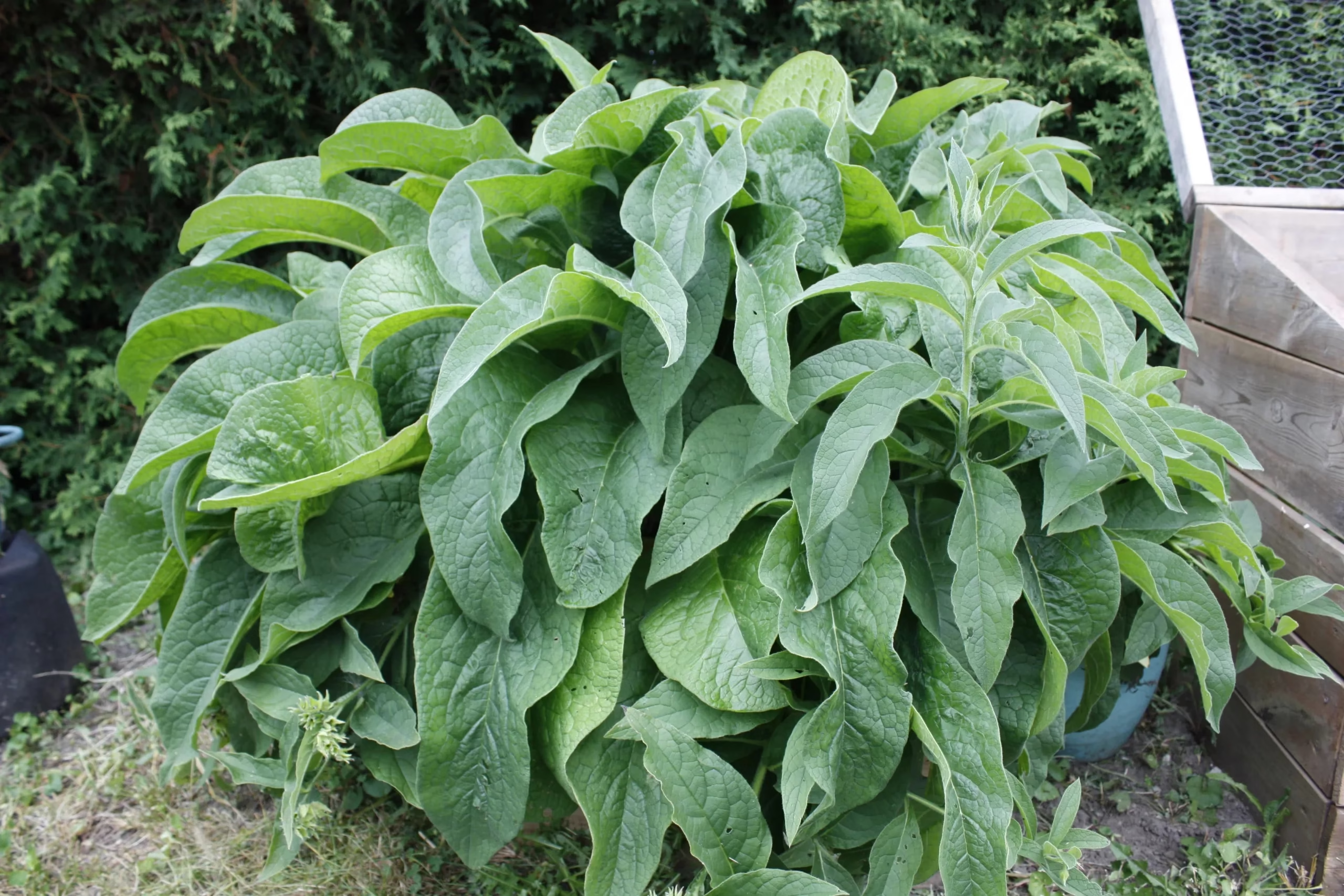
Comfrey is a popular plant that is part of the permaculture garden. Permaculture is a type of gardening where you work on creating a natural ecosystem where everything works together. This type of gardening is in opposition to monoculture and using chemicals in the garden. The purpose is to include perennials, natural fertilizers such as comfrey and to grow a diverse set of plants together so that your garden can take care of itself without outside help. So let’s get into why comfrey!
All About Comfrey
Comfrey is a perennial plant that is native to Europe and Asia and is part of the borage family. The reason that comfrey makes for a brilliant addition to your garden is because it can be used to make plant fertilizer. Comfrey as a fertilizer has an NPK similar to manure but can be grown and made at home, drastically cutting down your costs spent to feed your garden.
The reason that comfrey makes for such a good fertilizer is because it’s a dynamic accumulator. The roots of the plant grow 8-10 feet deep and can reach nutrients in the soil that most other plants can’t access. What it does is it collects these nutrients and stores them in the leaves. So when you use the leaves in your garden, those nutrients transfer into your garden soil, thereby feeding your plants.
I wanted to make a quick mention that comfrey has been used in history as a topical medicinal treatment, but also there is information out there to ingest it. I do not recommend ingesting any comfrey related products. It can make you sick, and I want to be very clear that when I mention “comfrey tea” or any other uses for comfrey, I do not mean for human consumption, but to be used directly in garden soil.
Comfrey Varieties

There are two types of comfrey on the market right now; common comfrey and Bocking 14. Common comfrey is the variety that you can buy from seed and is available at some seed companies here in Canada, however I don’t recommend ever growing this variety. Comfrey can be quite invasive as it spreads from seeds and roots. Because the roots can grow 8-10 feet deep, once you plant it you can never dig it back up. Comfrey can grow from even a small piece of root left behind, which means that it’s a permanent fixture in your garden. The Bocking 14 variety has been bred to have sterile seeds which means that the plant can only spread by roots that are dug up, and the flowers cannot seed all over your garden.
Comfrey Sun, Soil and Water Requirements
Comfrey overall is a hardy, low maintenance plant. The Bocking 14 variety is a Russian variety that can handle winters down to -40°C making it a great perennial for all zones in Canada. It grows best in full sun, however I have had it planted under a tree before and it still grew quite tall and flowered, making it versatile under many conditions. Since it’s a perennial plant, you will want to properly consider where you wish to plant it since it will become a permanent fixture in that location.
Because you want to grow comfrey as a fertilizer, you will want to plant it in fertile soil. Avoid growing it in a pot since you want it to collect as much nutrients from the soil as possible.
Finally, comfrey is very drought tolerant due to its deep roots. Water your comfrey in the spring when the soil is dry to help with growth (and early harvests) but during the summer you don’t need to water it often.
Learn more sustainable ways to fertilize your garden and grow massive plants in our self-paced, online course.
How to Grow Comfrey from Seed
The easiest answer to this: don`t. The only comfrey you can grow from seed is the common variety and I don’t recommend growing this variety due to its spreading nature. Unless you never plan to move from your house and are willing to cut off all of the flower blooms, don’t grow it from seed. Find a retailer or someone online selling a cutting of their sterile Bocking 14 variety and grow this instead.
Caring for Comfrey Seedlings

Comfrey grows super quickly and easily. It doesn’t require much effort to grow beyond regular watering. You can keep it growing in a pot until you decide where to plant it, just keep it regularly watered and place the pot in a tray so the roots don’t grow out of the pot into your lawn or surrounding area.
Continue your garden learning:
- Grobox Garden Raised Bed Review
- How to Invite Ladybugs into Your Garden
- How to Grow Cabbage from Seed to Harvest
- Your Most Asked Raised Garden Questions ANSWERED
- 6 Tricks to Grow Massive Onions in Cold Climates
Comfrey Planting Guide

Make sure the location you choose is a good place for a permanent plant since you won’t be able to move it in the future. I chose to build a 2×2 raised bed to plant mine in, in hopes of containing it to a narrow location. My plant has been here for 2 years now and hasn’t grown out of the base of the garden and has stayed contained, which has worked out well.
Comfrey can grow 6 feet tall, and 3-4 feet wide so give it enough space to grow and you will be rewarded with endless fertilizer. You can see in the photo above that my plant is crowding out the garden on the right side so make sure you consider the plant at its full size.
Harvesting Comfrey
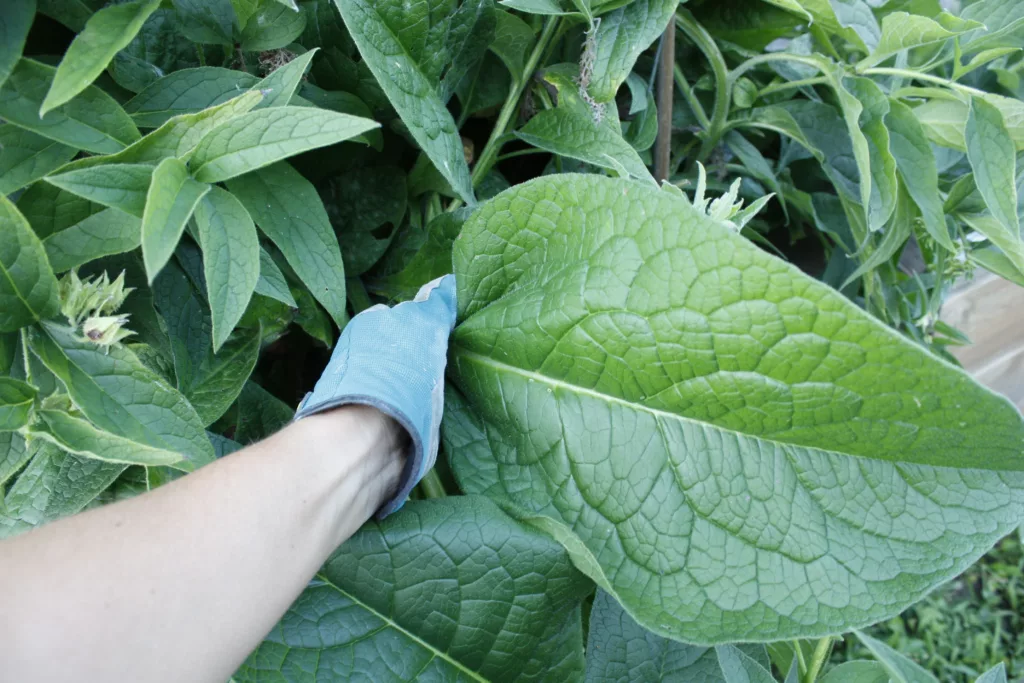

Harvesting comfrey is quite simple. The leaves and stems can cause skin irritation so it’s recommended to wear garden gloves and long sleeves if you plan to do a large harvest. Cut or break off the stems and leaves of the plant as you can use all parts of the plant to create a fertilizer.
To create strong plants, don’t harvest from your comfrey the first year it was planted. Allow it an entire season to grow before you start cutting from it.
Join the family, get advice straight to your inbox!
Ways to Use Comfrey
There are a few different ways that you can use comfrey; from simple methods to longer options which will be covered below.
Chop and Drop

The easiest way to use comfrey is using the chop and drop method. It’s exactly as the name suggests. Harvest some leaves and stems from the plant, chop them into smaller pieces and drop them at the base of your plants. You can also dig the first couple of inches of the soil and bury it a bit but it isn’t necessary. Within a week the leaves will start breaking down which will start feeding the soil. At this point you can work it into the soil, or you can leave it in place.
Comfrey Fertilizer Tea

The next way to use comfrey is by making it into a fertilizer tea. To do this, you need to cut up some leaves and put them in a jug of water, or a rain barrel. As the leaves break down and rot it will incorporate with the water. Depending on the ratio of water to leaves, you will either get a light green tea coloured water, all the way up to a dark brown. Be warned, as the leaves break down it will smell BAD. If you’re making a quick tea, you can use it within a week, however the longer you let the leaves soak, the stronger and darker it will get.
We recommend making comfrey tea in a container that has a lid, such as a bucket or a rain barrel. If you make a light green tea, you don’t need to dilute it before watering your garden. If you make a very dark tea, dilute at a ratio of 1:20 water to tea.
Dehydrate into Comfrey Powder

This method allows you access to fertilizer over the winter months for your houseplants. To make a comfrey powder, harvest leaves (but not stems) and either dry them in the sun for a few days or use a dehydrator. Once the leaves are fully dry, crush them in a blender until it becomes a fine powder. We recommend doing this in a well ventilated area, and to also wear gloves since the dried leaves become even more irritating than the fresh leaves. Store this in an air tight container and use as required over the winter.
Common Pests & Problems of Comfrey

Comfrey, overall, is a super easy plant to grow with no diseases or pests that cause severe damage. We have found Japanese beetles on our plants a few times this year but they don’t cause significant damage or affect yields at all.
Splitting Your Comfrey Plants
The best time to split comfrey is in the spring when the first signs of growth start. Choose one side of your plant to harvest from and dig up some roots. It’s okay to stick a shovel in the plant and it won’t kill your main plant (similar to splitting hostas). You’ll be surprised how small of a root you need to start a new plant. The roots will have a similar shape to a carrot and each of those will start a new plant. The larger the piece, the faster it will root and grow, however you will get new growth from smaller pieces as well.



